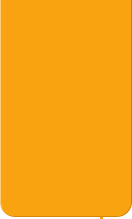



Language Arts: Interjections - Tutorial
Some Helpful Tools
Interjections
How Interjections Are Used
This section will show you how interjections can be used in a sentence.
Examples of Interjections
Surprise or shock:
"Wow! Look at that!"
"Well! I never."
Fear:
"Yikes, a spider!"
"Aah! It's chasing me!"
"Help! I can't swim!"
Pain
"Ouch! That hurts!"
"Oh, my leg."
Relief:
"Phew! I'm glad that's over."
"Aha! I found it."
Accident:
"Oops! My mistake."
"Oh no! It's ruined!"
Regret or sympathy:
"Aww! That's too bad."
"Oh dear! What are you going to do?"
Happiness and excitement:
"Yeah! We won!"
"That's really awesome!"
Interjections can be followed by a comma or an exclamation mark.
Interjections are not used in formal writing or speaking. However, an
interjection can be used formally in a direct quote.
Interjections are not grammatically related to any part of the sentence.
The exclamation mark can go directly at the end of the interjection and/or at the end of the sentence.
It all depends on where you want to show excitement or emphasis.
An interjection that is followed by a comma does not show as much excitement as an interjection that is followed by an exclamation mark.
Interjections emphasize feelings of excitement or emotion. They can be placed throughout the sentence as a filler and are usually followed by an exclamation mark (!).
"Whoa! That's hot!"
"Oh! You scared me."
"Good grief!"
"Wow! That's new."
Other times interjections can stand alone, or they can be placed at the beginning or the end of a sentence.
Interjections can be used as an introductory expression yes or no.
"Yes, I'll have the salad."
"No, that will not be necessary."
Interjections can be used as sounds.
"Psst! Over here!"
"Whew! That's heavy!"
"Yes, I know exactly what you mean."
"Watch out!"
1.
2.
3.
4.
Below are a few examples of interjections and when they are usually used.